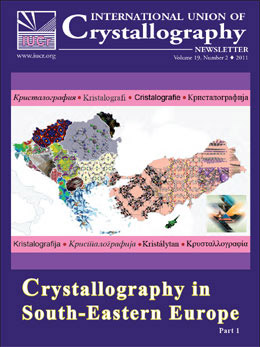Crystallography in Turkey
 |
 |
As an independent scientific discipline, crystallography did not secure its position in Turkey until the 1960’s. In general crystal geometry and crystal optics were taught in Geology and Mineralogy Departments in the form of general and special mineralogy to prepare students for microscopic investigation of the crystalline material. In some departments, as well as in the Mineral Research and Exploration Institute of Turkey (MTA), few x-ray powder diffractometers existed for identification of an unknown. In physics and chemistry departments the subject of crystal symmetry, physical and chemical properties of crystals were taught without going much into detail of structure analysis.
In the mid 1960’s Ali Fuat Cesur of Ankara University started an X-ray crystallography laboratory, which used photographic single crystal data collection techniques. In 1970 a new laboratory for structural research was established at Hacettepe University in Ankara under the leadership of Dincer Ulku. The initial equipment involved a 5kW x-ray generator for dual tube operation, a GE-SPG2 Spectrogoniometer with a quarter circle single crystal orienter, proportional and scintillation counters as well as Wiessenberg, Buerger Precession and powder cameras. Since then, this laboratory has become the leading centre of X-ray crystallography in the country. In 1992 the purchase of a CAD-4 diffractometer improved data collection and publications in internationally refereed journals and attracted many young scientists to do their graduate work in x-ray crystallography. In 1999 a rotating anode X-ray generator was put in operation in the same department. Xray crystallographers trained at Hacettepe University were offered academic positions at other universities in the country.
For instance, the crystallography laboratories at Gazi, Erciyes, Ondokuzmayıs and Atatürk Universities were established by these young crystallographers and are very active, especially in chemical crystallography today. Several X-ray single crystal and powder diffraction units currently exist scattered across the country.
However, there are some university X-ray diffraction labs in the country, mainly dedicated to materials science research using crystallographic methods.
